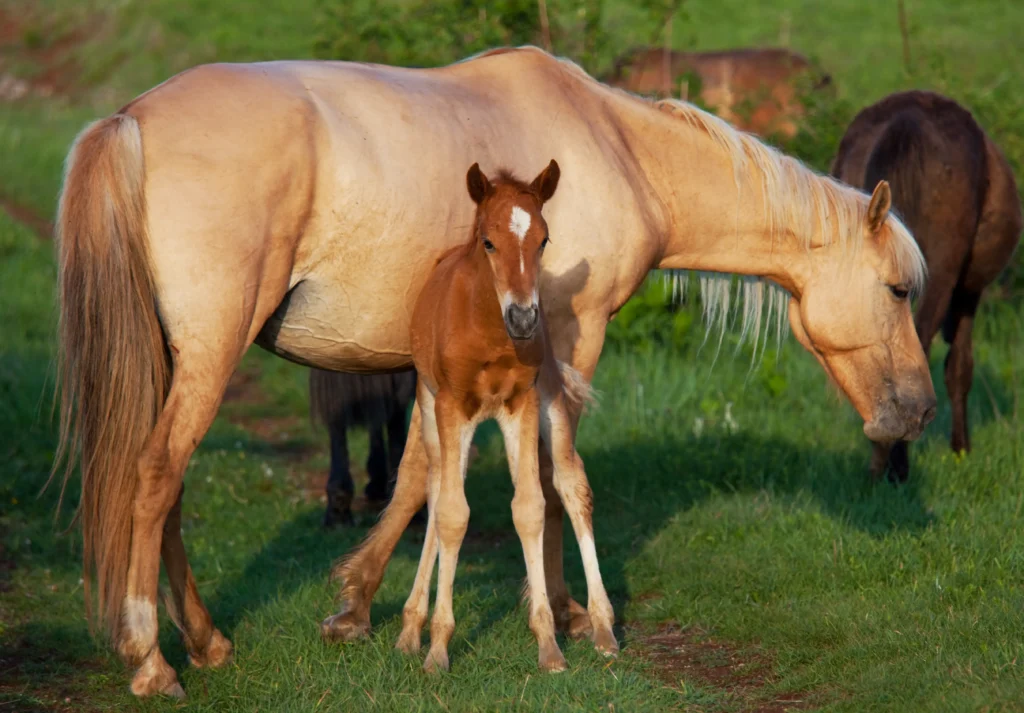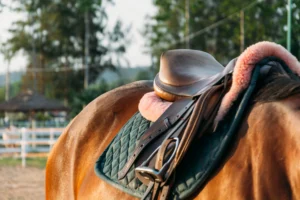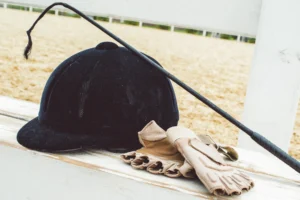Introduction
The palomino quarter horse represents one of the most striking and sought-after equines in America. With their gleaming golden coats, flowing white manes, and powerful quarter horse build, these animals turn heads in any arena, trail, or pasture. The American Quarter Horse Association recognizes the palomino quarter horse not as a separate breed but as a color variation of the quarter horse, America’s most popular equine breed.
When browsing palomino quarter horse for sale listings, potential owners often find themselves captivated by the iconic golden hue and versatile quarter horse conformation. However, despite their undeniable beauty and popularity, the palomino quarter horse might not be the ideal choice for every equestrian. While these magnificent animals offer numerous advantages, certain characteristics of the palomino quarter horse deserve careful consideration before making this significant investment.
This comprehensive guide examines five important reasons why a palomino quarter horse might not align with your specific needs or circumstances. We’ll explore palomino horse genetics, temperament considerations, care requirements, cost factors, and availability challenges that might make alternative horse breeds or colors more suitable for certain owners.

Understanding the Palomino Quarter Horse
Before diving into potential drawbacks, let’s establish some foundational knowledge about what makes a palomino quarter horse unique among equines.
What Is a Palomino Quarter Horse?
The palomino quarter horse combines America’s most popular breed—the American quarter horse—with one of the most visually striking coat colors in the equine world. The palomino coloration results from specific palomino horse genetics: a single cream dilution gene acting on a chestnut base coat. This genetic combination produces the characteristic golden body color with white or flaxen mane and tail that defines the palomino horse.
The American Quarter Horse Association (AQHA) recognizes numerous quarter horse colors, with palomino being among the most coveted. Unlike some horse breeds defined by color, the palomino designation refers solely to coloration rather than breed-specific traits. A palomino American quarter horse possesses all the athletic abilities, conformation standards, and versatility of quarter horses while showcasing the golden palomino coat.
Palomino Horse Characteristics
Palomino horse characteristics extend beyond their striking appearance. The ideal palomino displays:
- Golden coat ranging from light cream to deep gold
- White or flaxen mane and tail
- Dark skin underneath the coat (differentiating them from cremello horses)
- Quarter horse conformation featuring a muscular build, compact body, and powerful hindquarters
- Typical quarter horse height ranging from 14.3 to 16 hands
- Versatility for various disciplines including western pleasure, reining, cutting, barrel racing, and trail riding
Palomino Horse Registry and Recognition
While all palomino quarter horses qualify for registration with the AQHA under quarter horse colors, enthusiasts may also pursue registration with specialized color organizations:
- The Palomino Horse Association (PHA)
- The Palomino Horse Breeders of America (PHBA)
These organizations maintain specific standards for palomino horse registry and promote the palomino coloration across various breeds, not limited to quarter horses.

Reason 1: The Golden Color Comes With Genetic Limitations
The stunning gold coat that makes the palomino quarter horse so desirable represents both its greatest attribute and a potential drawback for serious breeders.
Complex Palomino Horse Genetics
Understanding palomino horse genetics reveals why breeding consistently for the palomino color can be challenging:
- Genetic Variability: The palomino color results from a specific combination—one copy of the cream dilution gene (Cr) acting on a chestnut base coat. This genetic requirement means not all breeding combinations will produce palomino foals.
- Breeding Complications: When breeding two palominos together, the potential outcomes include:
- 25% chance of a chestnut foal (no cream gene)
- 50% chance of a palomino foal (one cream gene)
- 25% chance of a cremello foal (two cream genes)
- Color Stability Concerns: The palomino coat can vary significantly throughout seasons and with sun exposure. Some palomino quarter horses may appear almost white during winter months and develop a deeper golden hue during summer.
- Palomino vs Buckskin Confusion: Distinguishing between palomino and buckskin horses can sometimes prove challenging. While palominos have a golden coat with white mane and tail, buckskins display a golden body with black points (mane, tail, and lower legs). This distinction results from the cream gene acting on different base colors—chestnut for palominos and bay for buckskins.
For breeders focused primarily on competitive performance rather than aesthetics, these genetic complexities may present unnecessary complications when compared to breeding for more consistently inherited traits.
Reason 2: Palomino Quarter Horse Temperament Considerations
While the palomino quarter horse generally demonstrates the favorable palomino horse temperament associated with quarter horses, several temperament-related factors warrant consideration.
Visibility and Attention
The striking appearance of a palomino quarter horse naturally draws attention in any setting. This heightened visibility can create challenges for:
- Anxious or inexperienced riders who may feel additional pressure when all eyes focus on their distinctive mount
- Young or green horses still developing confidence in public settings
- Competitions where the horse’s flashy appearance might create higher expectations from judges and spectators
Training Implications
Some experienced trainers note that highly visible horses like palominos sometimes receive different handling during their development:
- Selection Bias: Exceptionally colored horses sometimes receive breeding priority based on appearance rather than temperament or performance attributes.
- Training Focus: Owners occasionally prioritize showcasing their palomino’s beauty over comprehensive training, potentially resulting in knowledge gaps.
- Handling Differences: Distinctive horses sometimes receive different treatment in training environments, with handlers either being overly cautious or inappropriately showcasing the animal.
While the palomino American quarter horse typically exhibits the breed’s characteristic level-headedness, willingness to work, and versatility, individual temperament always varies regardless of color. Prospective owners should evaluate each palomino quarter horse individually rather than making assumptions based on color or general breed characteristics.
Reason 3: Specialized Care Requirements for the Palomino Coat
Maintaining the signature golden gleam of a palomino quarter horse demands specific palomino horse care practices beyond standard equine maintenance.
Coat Maintenance Challenges
The palomino’s golden coat requires additional grooming considerations:
- Sun Exposure Management: Excessive sun exposure can bleach the palomino’s golden coat, sometimes resulting in a washed-out appearance. Owners often need to provide adequate shelter or use fly sheets with UV protection during intense sun periods.
- Staining Concerns: The light-colored coat and especially the white mane and tail show dirt, grass stains, and manure stains more readily than darker horses.
- Specialized Grooming Products: Maintaining the vibrant golden hue often requires special shampoos and conditioners designed specifically for palomino horses. These products help enhance the golden tones while keeping the white mane and tail bright.
- Show Preparation: Preparing a palomino quarter horse for shows typically involves more extensive grooming protocols than for solid-colored horses. Owners often use specialized whitening products for manes and tails while enhancing the golden body color.
Skin Considerations

Palomino horses sometimes demonstrate increased sensitivity to:
- Sunburn, particularly on pink-skinned areas
- Certain skin conditions that may be more visible on their lighter coats
- Insect bites, which can create more noticeable welts or reactions on the golden coat
While proper palomino horse care can mitigate these challenges, owners should recognize that maintaining a palomino’s picture-perfect appearance requires additional time, products, and attention compared to some other horse colors.
Reason 4: The Premium Price of Golden Beauty
When researching how much is a palomino horse, prospective buyers consistently discover a price premium associated with this desirable coloration.
Cost Factors for Palomino Quarter Horses
Several financial considerations may make palomino quarter horses less accessible:
- Purchase Price Premium: A palomino quarter horse for sale typically commands higher prices than similarly bred and trained quarter horses of more common colors. This “color tax” can add anywhere from 10-30% to the purchase price.
- Registration Expenses: Owners seeking to maximize their palomino’s value often register with both the AQHA and specialized color organizations like the Palomino Horse Breeders of America, incurring additional fees.
- Show Circuit Expenses: Showing a distinctive palomino often involves:
- Specialized grooming products for coat enhancement
- Professional photography to capture the horse’s striking appearance
- Potentially custom-designed show clothing to complement the golden color
- Insurance Considerations: Higher-valued horses typically incur proportionally higher insurance premiums.
Value Retention Variables
While palomino quarter horses often command premium prices, several factors affect long-term value:
- Market trends and color popularity fluctuations
- Quality of conformation and bloodlines independent of color
- Performance records and offspring success
- Changes in coat appearance with age (some palominos darken or develop white markings)
For budget-conscious buyers or those primarily interested in performance attributes, the additional cost associated with palomino coloration may represent an unnecessary expense when comparable athletic ability can be found in more affordably priced quarter horses of different colors.
Reason 5: Limited Availability and Selection Challenges
Despite the popularity of the palomino quarter horse, finding the perfect combination of color, conformation, training, and temperament presents unique challenges.
Scarcity Within Specific Disciplines
While palomino quarter horses excel across disciplines, finding color-consistent performers in certain specialties proves challenging:
- Discipline Distribution: Palomino quarter horses appear more frequently in certain disciplines:
- More common in western pleasure, halter classes, and trail riding
- Less common in cutting, reining, and ranch work
- Variable representation in English disciplines
- Performance Bloodlines: Elite performance bloodlines sometimes produce fewer palominos due to genetic distributions within those breeding programs.
- Geographic Availability: Palomino quarter horse availability varies significantly by region, with certain areas having limited options.
Selection Compromises
The emphasis on color sometimes necessitates compromises in other areas:
- Conformational Trade-offs: Buyers fixated on obtaining a palomino may accept conformational compromises they would reject in differently colored horses.
- Training Level Adjustments: The limited pool of available palominos sometimes means accepting a horse with less ideal training or experience.
- Age and Gender Limitations: Finding a palomino gelding quarter horse or palomino quarter horse mare of a specific age range may prove more challenging than with more common colors.
For riders with very specific needs regarding training level, discipline specialization, or competitive experience, limiting the search to palomino quarter horses may significantly reduce the available pool of suitable candidates.
Alternatives to Consider
If these potential drawbacks give you pause, several alternatives exist that might better align with your specific equestrian goals:
Alternative Color Options in Quarter Horses
The American quarter horse showcases tremendous diversity in quarter horse colors:
- Buckskin: Offers similar golden beauty with black points and potentially more consistent inheritance patterns
- Dun: Provides distinctive primitive markings with a golden base and typically hardier coat characteristics
- Red Dun: Combines reddish tones with primitive markings for a unique appearance
- Bay: Represents one of the most common and consistent quarter horse colors
- Black: Offers dramatic appearance with generally simpler care requirements
Alternative Breeds with Palomino Coloration
If the palomino coloration remains your priority, consider these breeds where palomino genetics also appear:
- American Saddlebred: Elegant movement with flashy presence
- Morgan: Compact build with strong personality and versatility
- Tennessee Walking Horse: Smooth gaited option with palomino color possibility
- Andalusian: Baroque style with increasing palomino representation
- Miniature Horse: Palomino coloration in a smaller package
Making an Informed Decision
Despite the potential drawbacks outlined above, many equestrians find that their palomino quarter horse represents the perfect combination of athleticism, temperament, and beauty. The key lies in making an informed decision based on your specific circumstances and priorities.
Questions to Consider Before Purchasing
Before committing to a palomino quarter horse, ask yourself:
- Purpose Priority: Are you primarily seeking a horse for a specific discipline, or is aesthetic appeal equally important?
- Experience Level: Does your handling and riding experience align with the challenges of a highly visible, potentially high-spirited horse?
- Maintenance Realities: Can you commit to the additional grooming and care requirements necessary to maintain the palomino’s distinctive appearance?
- Budget Considerations: Does your budget accommodate both the higher initial purchase price and potential ongoing expenses associated with palomino ownership?
- Availability Options: Have you researched the availability of palomino quarter horses meeting your specific needs in your geographic region?
Evaluating Individual Horses
If you decide to pursue a palomino quarter horse, prioritize these evaluation criteria:
- Temperament compatibility with your experience level and goals
- Structural soundness and conformation quality
- Training appropriate to your intended use
- Health history and veterinary examination results
- Color authenticity and stability (some horses sold as palominos may actually be very light sorrels)
Conclusion
The palomino quarter horse represents one of the most visually stunning equine combinations in America. Their golden coats, athletic build, and versatile abilities make them perennial favorites across disciplines and recreational pursuits. However, the distinctive coloration comes with specific genetic, care, cost, and availability considerations that might make them less ideal for certain equestrians.
By understanding both the advantages and potential drawbacks of palomino quarter horse ownership, you can make an informed decision that aligns with your specific equestrian goals, experience level, and resources. Whether you ultimately choose a palomino quarter horse or another equine partner, prioritizing temperament, training, and health over color alone will lead to the most rewarding horse ownership experience.
Remember that each palomino quarter horse, like every equine, possesses individual characteristics that transcend color genetics. The perfect horse for you might wear a golden coat—or it might come in one of the many other beautiful colors nature has bestowed upon the remarkable American quarter horse breed.
Resources for Further Research
For those interested in learning more about palomino quarter horses, these trusted resources provide valuable information:
- American Quarter Horse Association (AQHA)
- Palomino Horse Breeders of America (PHBA)
- Equine Color Genetics
- UC Davis Veterinary Genetics Laboratory
- Journal of Equine Veterinary Science
For more informative articles about horse breeds, care, and training, visit our website at Pets Pump.
This article is intended for informational purposes only. Always consult with equine professionals, including trainers and veterinarians, before making important decisions about horse acquisition or care.






